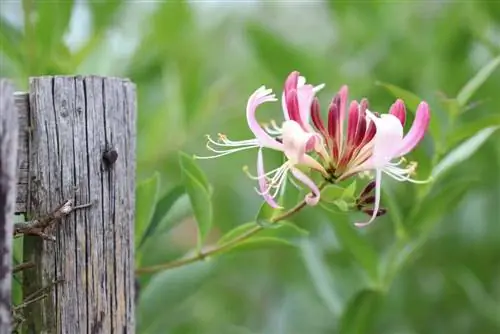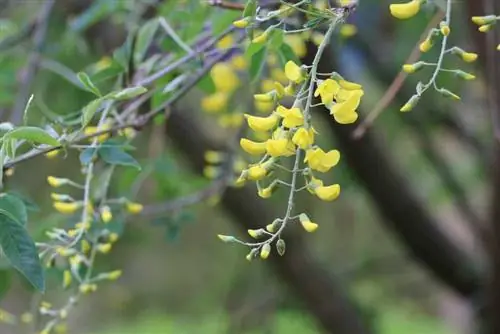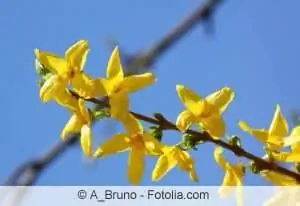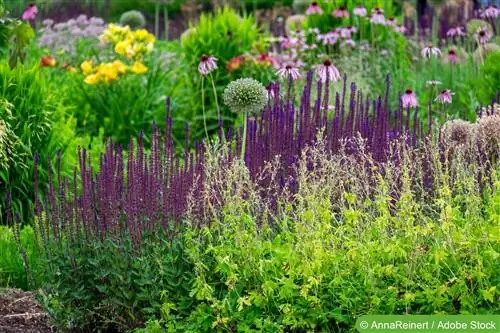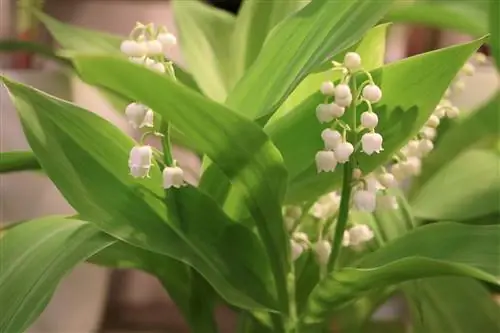- Author admin [email protected].
- Public 2023-12-17 03:39.
- Last modified 2025-06-01 06:48.
Colorful, decorative and hardy - these plant characteristics often play a major role when choosing balcony plants. Persistent flowering plants guarantee plant enjoyment that lasts for years; However, aspects such as available space or location should also be taken into account when planning. In this way, every hobby gardener can put together their own selection of flowering and hardy potted plants that turn the balcony into a blooming oasis.
Plants for the small balcony
No matter how small your own balcony is, at some point almost all hobby gardeners have the desire to use the available space to plant it with flowering plants.
Bunny Side
The following potted plants are suitable for a small terrace on the sunny side:
Gold basket
Gold baskets reach a size of around 25 centimeters and can therefore be planted in smaller pots. With their bright yellow flowers, which bloom over a long period from May to September, they are a visual highlight.
Pasqueflower
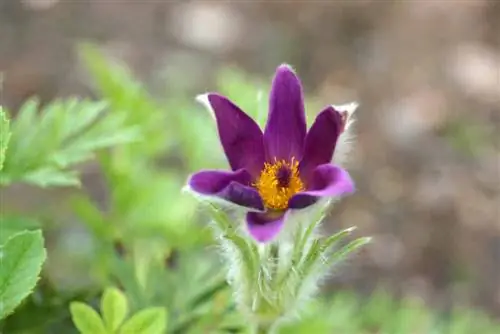
The pasque flower creates a nice color contrast. Depending on the variety, it blooms white, red or purple and is almost the same size as the golden basket; However, the flowering period is significantly shorter.
Shrub strawflower & bobhead
The shrub strawflower and the Bubikopf bloom in October. While the yellow-flowering strawflower (here the “Silver Needle” variety) reaches a height of up to half a meter and is therefore also suitable for background planting on the balcony, the Bubikopf is often used to fill up free areas. Cleverly sown in a low plant box, the hobby gardener can look forward to an extraordinarily decorative flower carpet of light blue star blossoms from May to October - which only reaches a size of 5cm in total.
Balcony planting for predominantly shady balconies
The following varieties are suitable for this:
Primrose
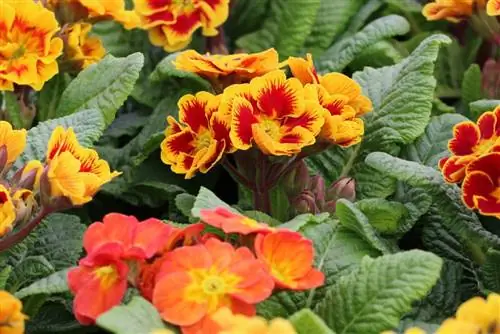
The flowering season for potted plants that can be cultivated in partial shade or shade begins in April, when the first primroses appear; The variety “Gold Lace” blooms with golden brown flowers and grows to a maximum height of 30cm.
Bergenia
Bergenias also appear at the same time, which look particularly decorative in bright pink; In winter the plant impresses with the reddish color of the leaves. The bergenia doesn't grow taller than 30cm either.
Foam Blossom
However, if you prefer light colors or pastel tones on the balcony, you should choose the foam blossom, which produces white or light pink flowers that hobby gardeners can also look forward to in April and May.
White Edge Hostas
In July and August, white-edged hostas join the flowering plants on the balcony; The “El Nino” variety blooms in a rich blue-violet, while the leaves turn green-blue.
Autumn Saxifrage
The end of the shade-tolerant balcony bloomers is the autumn saxifrage, which produces its white or pink flowers between September and October and reaches a total height of a maximum of 30cm.
Tip:
To save even more space, special flower racks can be equipped for vertical gardening; In this way, the open space is used even better!
Lush potted plants for the expansive balcony
If you have a lot of space on the balcony, you can also choose slightly larger plants to complement your selection.
Sun-loving varieties
Mediterranean Spurge
- green-yellow inflorescences from April to July
- Total height between 80 and 130cm
Dwarf Pentecost Carnation
- dainty white flowers in May
- strongly scented
- 5cm high
Storksbill
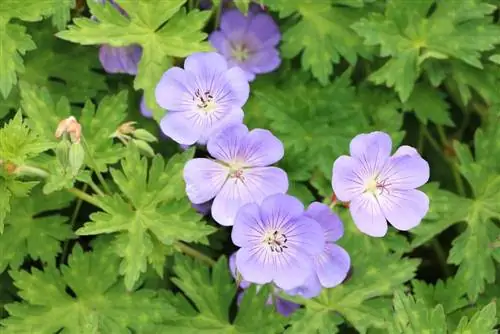
- blooms from June to October
- blue and red varieties available
- will be around 50cm high
Goldhair Aster
- blooms in August and September
- rich yellow flowers in dense clusters
- will be 30 - 40 high
Purple Bells
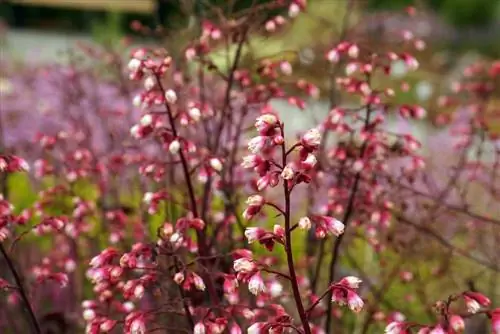
- Flowering period between August and October
- cream flowers
- brown leaves
- Total height up to 50cm
Petite Torch Lily
- blooms in a prominent
- intense orange tone between August and October
- reaches a height of up to 80cm
Golden Ledge Grass
- with its light golden flowers
- that appear in late summer
- a real eye-catcher
- reaches a height of over one and a half meters
Diamondgrass
- forms silvery-pink flower spikes in autumn
- up to one meter high
Plants for shade
Goatbeard
- “Woldemar Meier” produces white flowers on reddish stems in June and July
- will be 30cm high
Mountain Forest Cranesbill
- purple flowers from June to October
- becomes half a meter high
Magnificent Piers
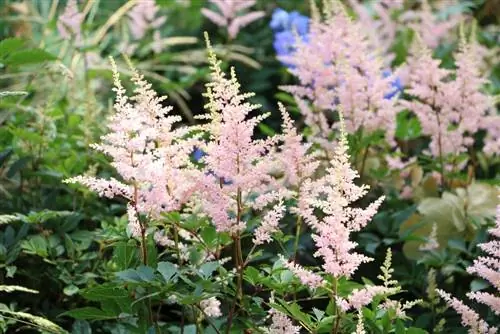
- The “Sprite” variety is particularly attractive
- forms numerous light pink flower spikes in July
Scarlet-Fuchsia
- intense violet flower tone
- blooms between July and October
- grows up to 60cm high
lily cluster
- blue or purple flowers
- August to October
- gets up to 40cm high
Attract pollinators - for even greater flowering fun
Many hobby gardeners who plan their balcony design with flowering and hardy potted plants easily forget that the flowers also need to be pollinated. However, many newer breeds and especially double varieties do not represent an attractive target for pollinators such as bees and bumblebees; The problem has become even worse in recent years because a general decline in insects has also been recorded in Germany. For this reason, it has proven to be useful to specifically attract bees and the like to the balcony with selected plants - where they can then also pollinate the other plants. Bee-friendly varieties include:
Beardflower
The bearded flower blooms from July to October and is available in various shades of red and blue. It reaches a height of up to one meter and has decorative gray-green leaves
Lavender
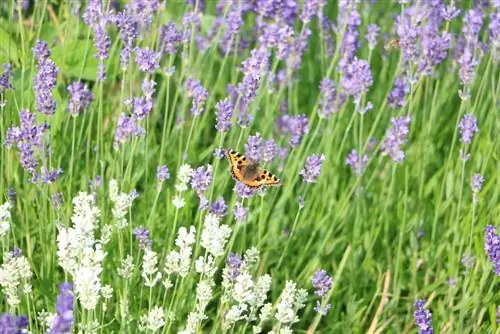
Garden lavender, which is one of the most popular plants on the balcony and can be grown well in a bucket, also acts as a bee magnet. The plant forms pretty blue flower cushions and exudes an intoxicating scent.
Strawberries & berry bushes
Last but not least, various edible plants can also be counted as attractive bloomers and insect magnets. The strawberry variety “Ruby Ann”, for example, produces extremely decorative, dark red flowers that beautify any balcony. Many blackberry or gooseberry bushes, which attract tons of bees when they are in bloom, also look appealing on the balcony with their delicate pink or white flowers.
The experienced hobby gardener knows
Only with a selection of bee-friendly flowers can all other plants be pollinated so that the maximum flowers can develop - every year anew.


